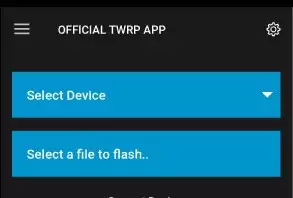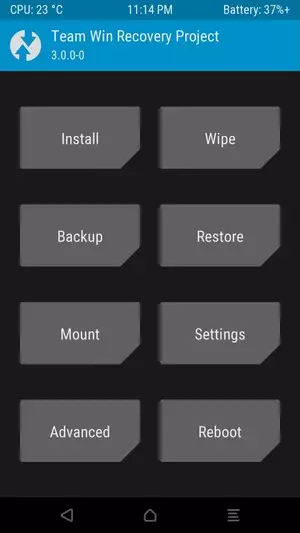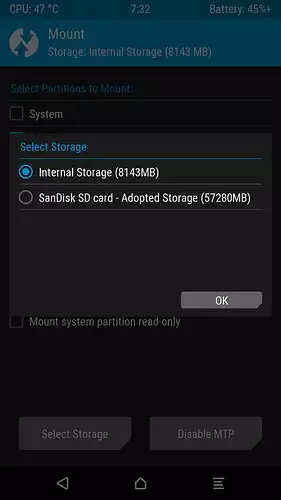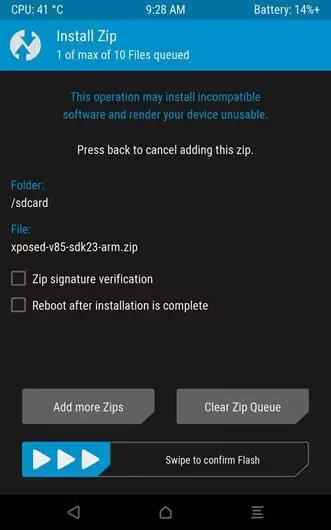Flash firmware on UMiDIGI Power 5
Mobiles >> UMiDIGI >> UMiDIGI Power 5| Specifications | Reviews | Secret codes |
| Unlock phone | Root phone |
| Backup | Flash Firmware | Screenshot |
How to flash UMiDIGI Power 5?
Why reinstall the firmware?
The operating system keeps getting errors.
Some installed applications do not open.
Many programs from the Play Market do not work.
The phone shuts down and restarts for no apparent reason.
The phone began to slow down a lot.
You want to update the firmware, as it does not suit you in terms of functionality.
Where can I find the firmware?
On the official website of your phone manufacturer.
On sites where developers post custom or official OS.
What should be done before installing the firmware?
Back up your contacts and user data and transfer it to another medium.
Insert an SD card into your phone to write the firmware to it.
Determine your smartphone model.
Fully charge your device. If the battery runs out during the firmware, the device will no longer turn on.
Download archive with Firmware. Place it on the SD card.
Installing TWRP Recovery
Download the Official TWRP App to your phone from the Play Market. And install this app.
When you start the application for the first time, you need to give consent to future manipulations, as well as to give consent to granting the application Superuser rights and click the 'OK' button.
After moving to the next screen, you need to select the 'TWRP FLASH' item and give the application root rights.

On the main screen of the application, click 'Select Device', and find your phone model.
After selecting a device, the application will direct the user to a web page to download the appropriate modified recovery environment image file. Download the suggested *.img file.
After downloading the image file, return to the main screen of the Official TWRP App and press the 'Select a file to flash' button. Select the file downloaded in the previous step.
After adding the image file to the program, click the 'FLASH TO RECOVERY' button and confirm your choice, click 'OK'.
When the message 'Flash Completed Succsessfuly!' appears. Click 'OK'. The TWRP installation procedure can be considered complete.
Write the firmware to the SD card. Using a PC or laptop card reader.
Insert a memory card into the phone.
To reboot into recovery, you need to enter the menu accessible by pressing the button with three stripes in the upper left corner of the main screen of the application. Select the 'Reboot' item, and then click on the 'REBOOT RECOVERY' button. The phone will reboot into the recovery environment automatically..
Firmware via TWRP

Before flashing, you need to clear the 'Cache' and 'Data' sections, press 'WIPE' on the main screen. You will delete all user data from the phone, this will avoid software errors and other problems.
You can start flashing. Click the 'Install' button.

On the file selection screen, at the very top there is a 'Storage' button for selecting an SD card.
Select the location where the files were copied. Press the 'OK' button.

Find the file we need and click on it. A screen opens with a warning about possible negative consequences, as well as the item 'Zip signature verification'. This item should be checked by placing a cross in the check-box, which will avoid using damaged files when writing to the phone's memory sections.
The procedure for writing files to the phone's memory will begin, this is accompanied by the appearance of inscriptions in the log field and the movement of the progress bar.
When the procedure for installing the firmware is completed, the message 'Successful' appears on the screen.
Summary: OS: Android v11; Screen Resolution: 720 x 1600 Pixels; Screen type: IPS LCD; Pixel density: 269 ppi; Aspect ratio: 20:9; Screen to body ratio calculated: 81.23 %; Bezelless display: Yes, with waterdrop notch; Touch screen: Yes, Capacitive Touchscreen, Multi-touch; Internal memory: 64 GB; Expandable memory: Yes, Upto 256 GB; Front camera: 8 MP; Front camera: 8 MP f/2.2 Primary Camera; Main camera: 16 MP 8 MP 5 MP; Resolution: 16 MP f/2.0 Primary Camera, 8 MP, Wide Angle, Ultra-Wide Angle Camera, 5 MP, Macro Camera; Camera setup: Single; Flash: Yes, LED Flash; Image resolution: 4616 x 3464 Pixels; Autofocus: Yes; Shooting modes: Continuos Shooting, High Dynamic Range mode (HDR); Video recordi ...
Comments, questions and answers on the flash firmware UMiDIGI Power 5
Ask a question about UMiDIGI Power 5




